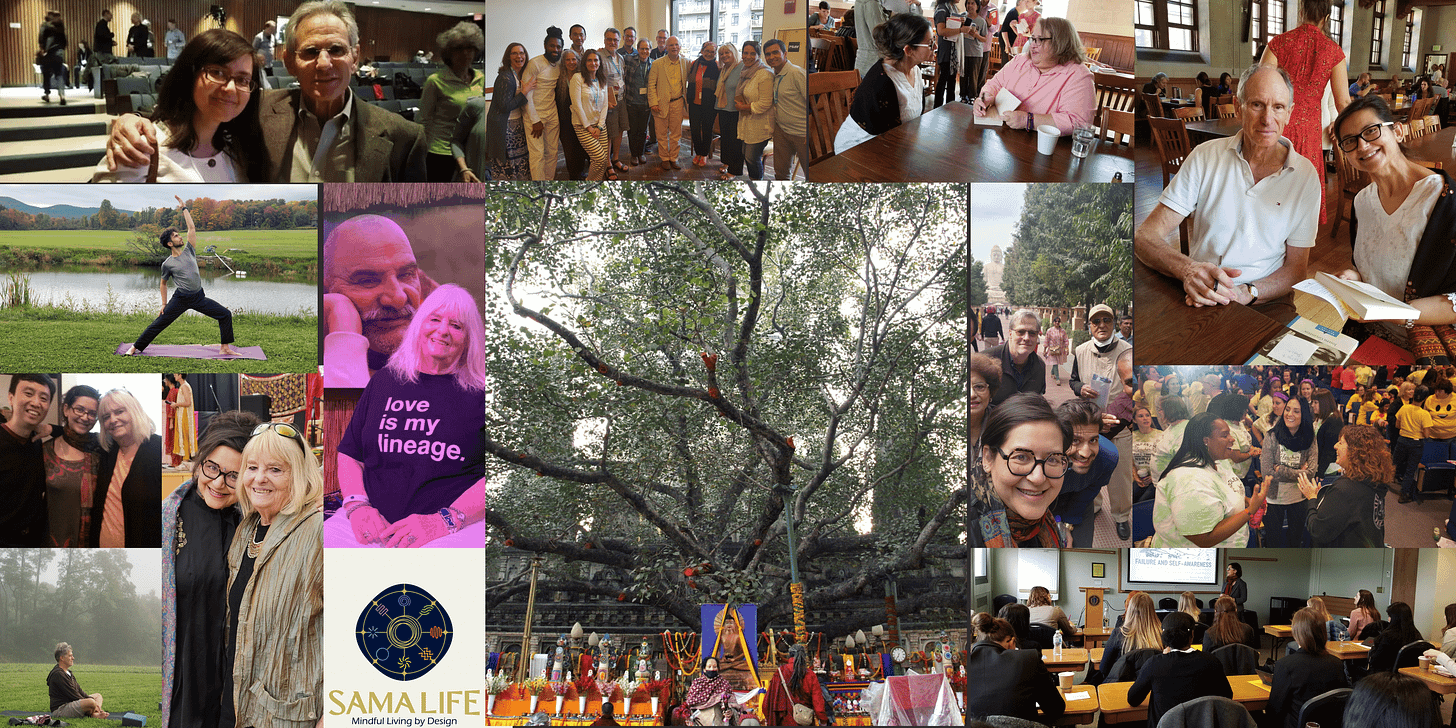Why Apps and Articles Aren't Enough for Real-World Mindfulness
Three Reasons to Begin Your Practice with An Experienced Mindfulness Teacher
In our digital age, mindfulness apps and books promise peace at our fingertips. While these resources can be wonderful starting points and help sustain our practice, they often fall short in bringing about real-world transformation. This is because they don’t offer the nuanced, personalized guidance to understand what mindfulness means, how to practice it, and what is needed integrating in everyday life for bringing about shifts in in how we process information and make decisions, especially in challenging situations.
As a certified mindfulness teacher trained at the UMass Medical School, I know first-hand the difference between knowledge gained from books and the wisdom we uncover in ourselves because of experienced facilitation.
Let’s look at three common limitations of relying solely on articles and apps:
I. The Crucial Missing Piece: The Debrief
The true power of mindfulness emerges not just in the practice itself, but in the debrief that follows. When you work with a certified teacher, you have the opportunity to share your experience—both the insights and the challenges. This reflection process is where the real learning happens.
Sometimes what feels like a challenge is actually the practice working exactly as intended. Other times, difficulties arise from misunderstandings about how to practice or from bringing unexamined expectations to the cushion. Without guidance, these moments can lead to frustration or abandonment of the practice altogether.
A Real-World Example: The Curiosity Conundrum
Let me share a story from my class that illustrates this perfectly. Nancy (not her real name) was practicing curiosity—a foundational mindfulness skill—during a difficult conversation with her husband. She found that the more she tried to be curious about her anger, the angrier she became. Why? She was asking "why" questions, which led to more reasons to be angry. “Why” questions when seeking new information about a situation can often lead to rumination and reinforce what our conscious mind already believes.
Through our debrief, Nancy learned that mindful curiosity invites us to ask "what" questions instead:
· What is my experience right now?
· What assumptions am I making about this situation?
· What beliefs do I hold about the other person?
· What are my intentions here?
· What might be going on for them?
This shift from "why" to "what" expands our understanding rather than deepening our existing grooves. From this broader perspective, we can take actions aligned with our true intentions for ourselves and others.
II. Spiritual Bypassing: When Mindfulness Becomes Avoidance
Psychologist John Welwood coined the term "spiritual bypassing" in the 1980s to describe how we sometimes use spiritual practices to avoid dealing with uncomfortable emotions or unresolved wounds. In mindfulness practice, this often looks like using meditation or mindfulness concepts to intellectually "rise above" difficult emotions rather than processing them authentically.
When we encounter difficult feelings like disappointment, anger, or grief, our natural instinct is to escape them. Mindfulness terminology can inadvertently become a sophisticated avoidance mechanism. We might prematurely forgive before processing hurt, use phrases like "everything happens for a reason" to avoid sitting with pain, or judge negative emotions as "unskillful" rather than experiencing them fully.
What makes spiritual bypassing particularly tricky is that it often masquerades as wisdom or enlightened thinking.
A Real-World Example: The Gift in Disappointment
I'll share something from my own life. I generally live with positive thinking, which isn't bad in itself. But when I use it to bypass difficult emotions, I lose out on valuable insights.
I once experienced major disappointment when I didn't land a dream job teaching mindfulness—one I had prepared for extensively and felt confident about. In the past, I might have beaten myself up briefly and then moved on with some version of "everything happens for a reason."
Instead, I paused to fully experience my disappointment. I stayed with the discomfort of my heartbreak and listened to my inner critic with kindness. Underneath the disappointment was a desire to reach a bigger audience teaching mindfulness.
This led me to ask: "What could I do now to reach more people?" That question sparked the inspiration to write my book Return to Mindfulness, conduct research that won academic awards from the American Marketing Association, and create new programs—all while deepening my own practice.
By patiently sitting with my disappointment, I discovered my deeper yearning to reach more people. Had I used positive thinking to bypass my experience, I would have missed this pivotal insight.
III. The Power of Community Practice
Another vital element missing from apps and books is community. Our dominant culture promotes busyness that leaves little room for reflection. Practicing in community provides the support we need to trust our inner wisdom and learn from each other's experiences.
Finding Your Path Forward
I encourage you to seek out a certified mindfulness teacher in your area or find a trusted instructor online. The systematic guidance and community support can make all the difference in developing a sustainable, transformative practice.
I'm offering an 8-week program designed to systematically and playfully foster eight essential skills that disrupt our default habits and biases, helping us return to clarity. Please take a few minutes to read the outline for each week and see if it resonates with what you need to access your inner knowing and live intentionally.
The journey to mindful living isn't meant to be traveled alone. Sometimes the most profound insights come not from an app notification, but from the shared wisdom of fellow practitioners and learning to trust our inner knowing.





